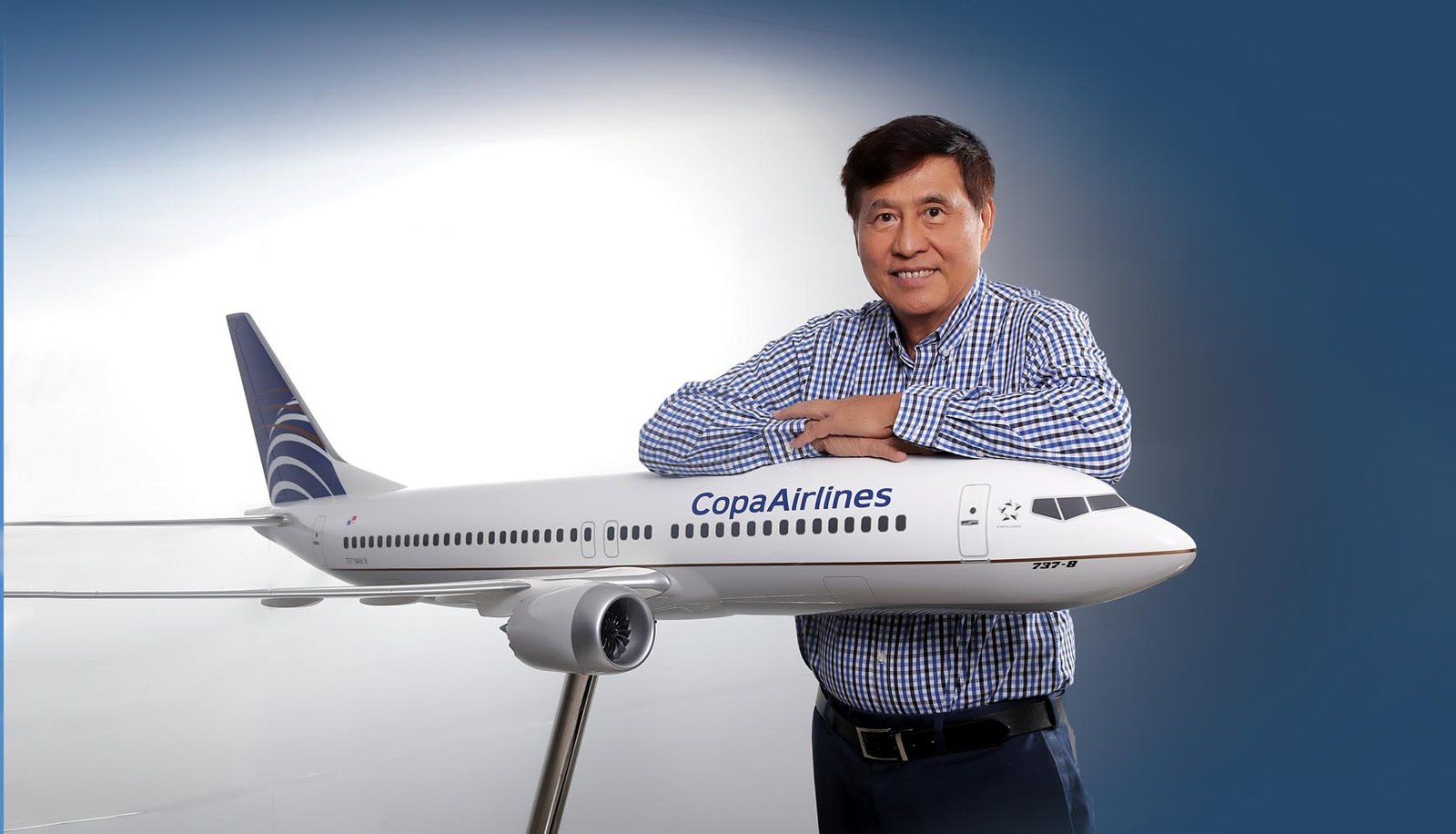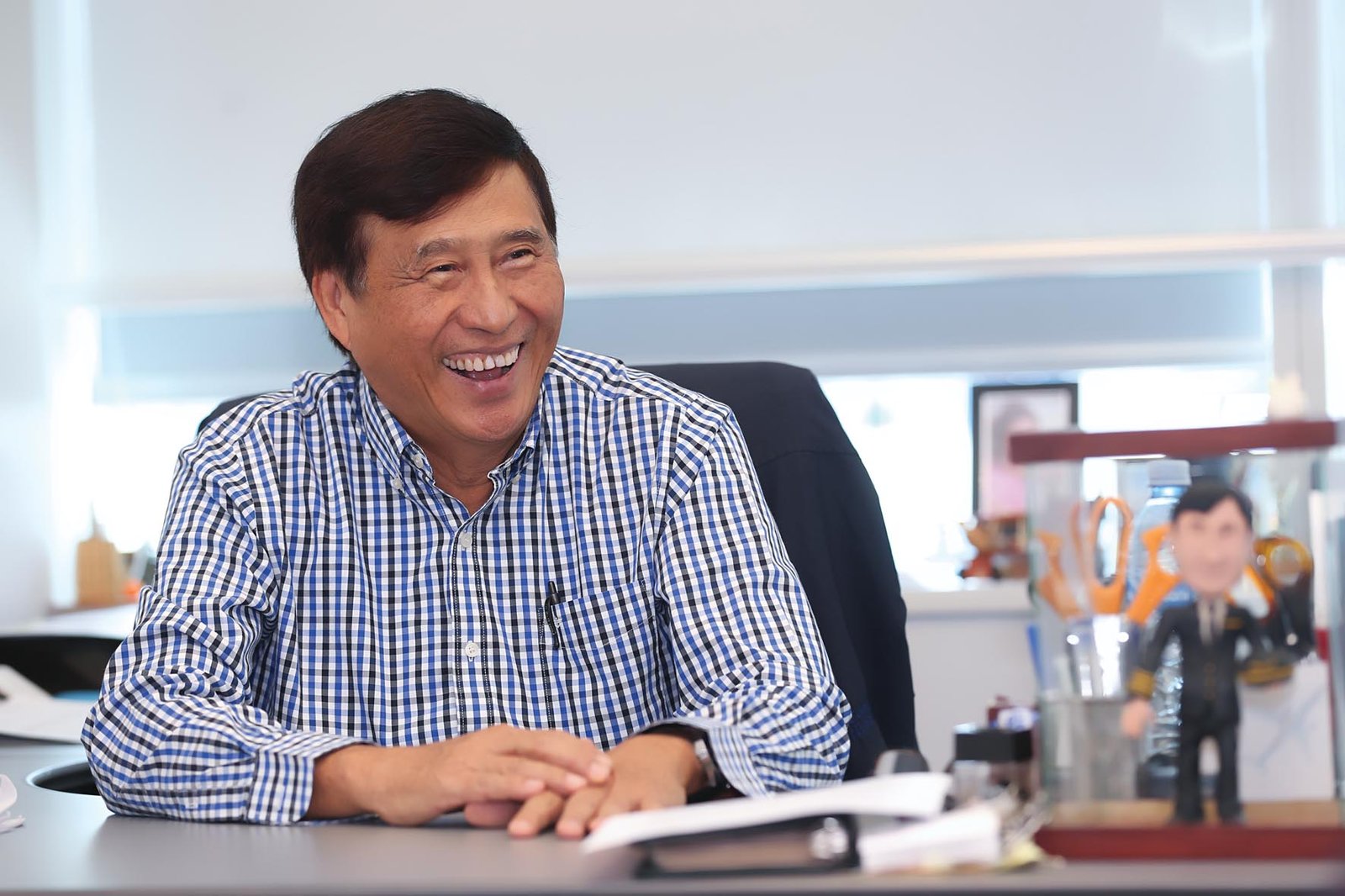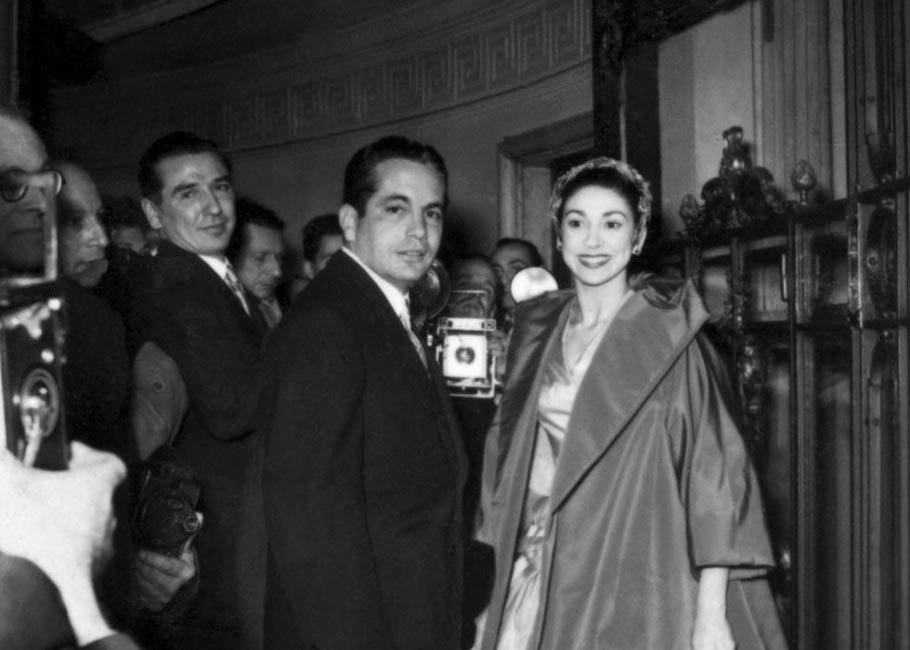
Capitán Anel Wong A Story of Determination and Hard Work
By Juan Abelardo Carles
Photos David Mesa
Captain Anel Wong can’t recall exactly when he decided to become a pilot but he knows he was very young. He was inspired by the U.S. combat airplanes that patrolled the Panama Canal Zone and flew over his town. “I remember a friend I had when I was seven or eight, we were schoolmates and we were doing our homework when she said to me, ‘When I am a doctor and you are a pilot, you will be able to fly over the town and I will see you.’” The town was Portobelo, a once-great colonial port that had turned into a sleepy coastal hamlet where mail arrived by boat every fifteen days.
Having a clear goal at an early age was essential to Wong’s success, since his dream was not easy to achieve for someone born in a town so far removed from the opportunities that only large cities seemed to provide. “When I was eleven, I left Portobelo to continue my secondary education, first at the Richard Newman Institute and later at the National Institute of Panama.”
Even before graduating from high school, Wong would leave school and go to the Marcos Gelabert Airport, then located in the Paitilla neighborhood of Panama. But the road ahead was difficult. “The flight hours required for learning cost twelve dollars at a time when the average salary was no more than 90 dollars per month. I went to an embassy, but they refused to give me a scholarship to be a pilot in a country where there was no aviation. I had to do something. One of my aunts, a deputy minister, got me into a course to be a teacher, but I left immediately. That was not for me.”
Fortunately, he learned that there was going to be a theoretical course for commercial pilots. “It cost the equivalent of an average monthly salary and I had fifteen days to pay it. I went to my family and friends; I got five dollars here, two and a half there. I raised all the money, enrolled in the course, and obtained the diploma for the commercial pilot land course.” He then took the United States Federal Aviation Administration’s (FAA) written test to be a commercial pilot in an office that the FAA maintained in the former Panama Canal Zone.

“A month later, a letter from the FAA arrived notifying me that I had passed the test. Although, in theory, I was a pilot, I had never been in an airplane.” Providence intervened in the form of Irving Bennet, owner and manager of the Panama Aircraft and Aviation School. “Mr. Bennet saw me and offered me work as a messenger and a janitor. And, if I came into the office on Sundays, he would pay me with an hour of flight. I carried the post on a motorcycle, I cleaned the restrooms, and on Sundays, I took care of the accounting and washed the planes so they would be ready on Monday. This is how I accumulated my first ten hours of flight.”
To get the license, however, he would need to work 200 Sundays, which would take more than four years. “The head of maintenance at the school, Humberto Goldoni, knew about my predicament and offered me the opportunity to take airplanes for short test flights when they changed the breaks or made some minor repair. So, from one seven-minute flight to another, I was able to accumulate all my flight hours. I say that I have always been lucky in life and, even though I believe in free will, I think that sometimes God forgets about that and puts something in your path to help you along.”
By 1969, Anel Wong had received his commercial license and was working with cargo airlines, piloting old, modified C-46s from World War II. “At that time I didn’t even dream of working with Copa, but, to my surprise, the general manager, Captain Hermes Carrizo, asked me if I wanted to fly with Copa. I began flying as a student and later as a co-pilot. At first, I was only paid two and a half dollars per diem per flight. Then, in September 1969, I signed a contract as a pilot, which meant I would earn the then-tremendous and enviable salary of $225 a month. Still, the money didn’t matter to me. I was happy just to be flying in an airplane.”
Copa pilots faced different challenges in those days. “In those times we didn’t have much technology, the flights were made primarily without information. For example, we didn’t have information on the weather conditions along the route or at the destination airport. Skill and experience were very important, since most of the planes did not have radar and the pilots had to learn to ‘read’ the clouds and determine where there was less turbulence when we went through storms.”

The interpersonal dynamics were also very different because it was a much smaller company. “We were a big family and all our problems were resolved in the office of Captain Hermes Carrizo, who was the manager of Copa in 1969. There were only fourteen pilots and all of the others were older than me. You have to remember that, at that time, aviation wasn’t used as much. As an industry, it was pretty stagnant and it was not growing. There were co-pilots who had been around for ten years without going up.” After four years with the company, Wong accepted a small administrative support job. “I began to put the operational manuals together, design itineraries, and write notes for the manager, and from there I began to climb. I have always had an administrative position with the company. Some of my contemporaries retired with almost 31,000 flight hours and I have only accumulated 22,000.
Things changed for the airline in the 1980s. “At that time, Copa, like many airlines in the region, struggled to survive, but here we had the fortune of a change in administration, which gave us our true north and established our current culture of quality. The success of Copa Airlines has been due to continuous effective communication between a workforce willing to take the latest leap and an administration with a first world company vision.”
There were, however, growing pains in this process and Captain Wong, in his double capacity as pilot and administrative officer, was a witness and actor in many of these situations. “We are an atypical airline; due to the size and extent of our operations, we seem a little out of place in the country of four million people in which we operate. We grew so fast that we ran out of local technical staff and had to look abroad.” This, of course, created some misgivings on behalf of the existing local staff. Wong, then Operations Director, entered into an arduous process of dialogue to help local workers understand that the airline needed qualified personnel in order to grow. Fortunately, they achieved their goal and today, Copa Airlines has employees of all nationalities and backgrounds, all of whom support the airline’s advancement, although the vast majority of staff are still Panamanian.
Now, as the Regulatory Affairs Senior Director at Copa Airlines, Anel Wong is responsible for negotiating the governmental requirements of the countries where the airline flies. But he has never forgotten the dream he has held in his heart since childhood. It pleases him today when he sees so many men and women following his example. “It gives me a kind of happiness to know that they are where I wanted to be from the beginning, that for them this has been a goal, and I see them happy and content. I miss not being able to be on the regular flight line, but I understand that there are times and circumstances that prevent you from continuing. However, I don’t feel as if I’ve stopped flying, only that I have changed skies. Every time I see a Copa Airlines plane in the air, I feel like I am in its cockpit.”



